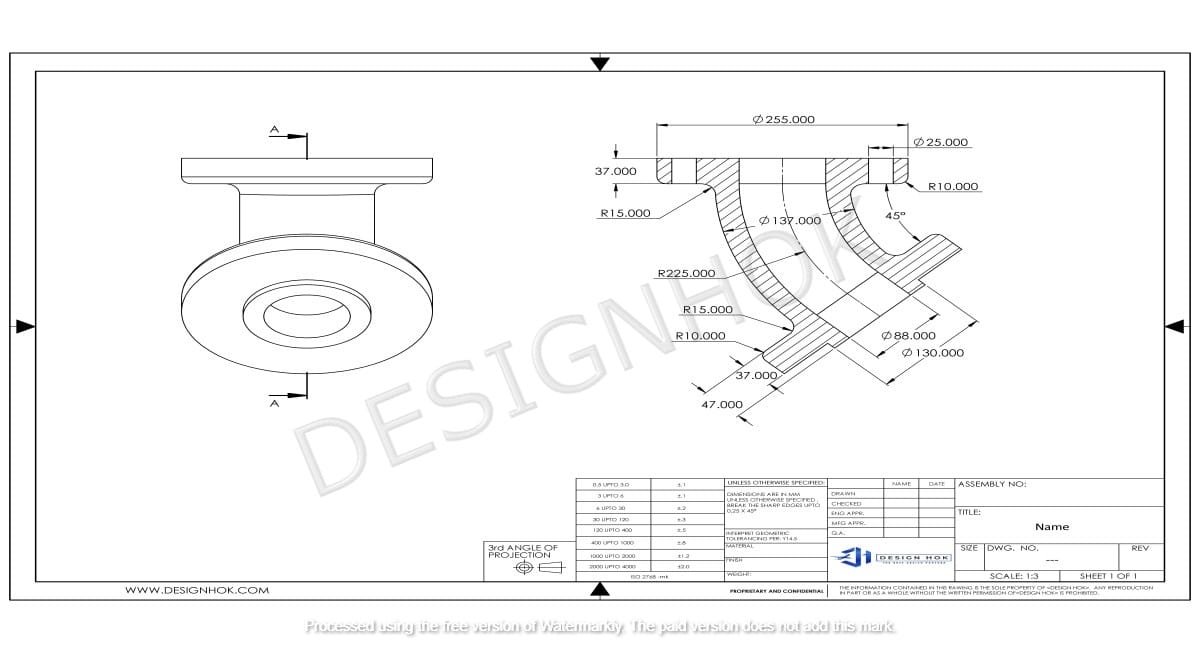Introduction
In the modern design and engineering landscape, 2D drafting remains an integral tool for professionals across various industries. Whether it’s for architectural plans, mechanical engineering blueprints, or electrical circuit layouts, 2D drafting provides the detailed and precise documentation necessary for successful project execution. These services involve the creation of two-dimensional representations of objects, structures, and systems to communicate design intent effectively.
What Are 2D Drafting Services?
2D drafting services focus on generating flat, two-dimensional representations of objects or systems. These drawings include dimensions, annotations, and specifications, offering a clear and concise way to interpret design ideas. These services often leverage software like AutoCAD, SolidWorks, or DraftSight to produce accurate and scalable drafts.
Professionals use 2D drafting for various applications, including:
- Architectural Drafting: Creating floor plans, elevations, and sections.
- Mechanical Drafting: Designing machine parts, assemblies, and equipment layouts.
- Electrical Drafting: Drafting circuit diagrams, wiring schematics, and control panel layouts.
- Civil Drafting: Generating site plans, grading plans, and infrastructure details.
Key Features of 2D Drafting Services
- Accuracy and Precision:
2D drafting ensures meticulous detailing, which minimizes errors and streamlines the design and construction processes. - Clarity in Communication:
Detailed 2D drawings serve as a universal language between engineers, architects, and contractors, eliminating ambiguities. - Customization:
These services allow the creation of tailored designs based on specific project requirements. - Scalability:
Drafts can be scaled up or down without losing detail, making them versatile for presentations and on-ground execution. - Integration with 3D Models:
Modern workflows often combine 2D drafts with 3D modeling, ensuring comprehensive design visualization.
Advantages of Outsourcing 2D Drafting Services
Outsourcing 2D drafting can save time and resources while ensuring high-quality results. Here are some benefits:
- Cost-effectiveness: Eliminates the need for in-house design teams and expensive software investments.
- Expertise: Access to skilled drafters with experience in various industry standards and design norms.
- Efficiency: Quick turnaround times and error-free designs improve project timelines.
- Focus on Core Activities: By outsourcing, companies can concentrate on strategic tasks while leaving technical drafting to specialists.

Industries Benefiting from 2D Drafting Services
- Construction: Site layouts, building plans, and detailed blueprints ensure accurate construction and compliance.
- Manufacturing: Component designs, assembly instructions, and tooling layouts streamline production.
- Electronics: Precise circuit designs and PCB layouts enhance functionality and manufacturability.
- Automotive: Drafting detailed designs for vehicle parts and assemblies accelerates prototyping and production.
- Energy: Efficient designs for power plants, pipelines, and renewable energy setups aid in operational success.
The Role of Software in 2D Drafting Services
Advancements in technology have significantly enhanced the efficiency and accuracy of 2D drafting. Leading tools used in the industry include:
- AutoCAD: The most widely used software for creating detailed and scalable 2D drafts.
- DraftSight: A cost-effective alternative for professional-grade drafting.
- SolidWorks: Known for its ability to seamlessly integrate 2D and 3D workflows.
- Revit: Used for architectural drafting, enabling collaboration and integration with Building Information Modeling (BIM).

Choosing the Right 2D Drafting Services
When selecting a provider for 2D drafting services, consider the following factors:
- Experience and Expertise: Look for a team with industry-specific knowledge and a proven track record.
- Software Proficiency: Ensure the use of the latest drafting tools for enhanced efficiency.
- Turnaround Time: Timely delivery of drafts is crucial for keeping your projects on track.
- Customization Options: The provider should accommodate unique requirements and project specifications.
- Cost Transparency: Opt for services with clear pricing structures to avoid hidden fees.
Conclusion
2D drafting services are an indispensable part of design and engineering workflows, offering clarity, precision, and efficiency. Whether for architectural layouts, mechanical schematics, or electrical diagrams, these services bridge the gap between concepts and reality. By leveraging the expertise of skilled professionals and the capabilities of advanced software, businesses can achieve flawless designs that meet industry standards.
FAQs
1. What is the difference between 2D drafting and 3D modeling?
2D drafting focuses on flat, two-dimensional representations, while 3D modeling creates lifelike, three-dimensional visualizations of objects or structures.
2. How much do 2D drafting services cost?
Costs vary based on project complexity, scope, and provider expertise. Customized quotes are often provided.
3. What industries commonly use 2D drafting services?
Construction, manufacturing, automotive, electronics, and energy industries rely heavily on 2D drafting for project planning and execution.
4. Can 2D drafts be converted into 3D models?
Yes, many service providers offer conversion capabilities, enabling seamless transitions between 2D and 3D formats.
5. Why is 2D drafting still relevant in the era of 3D modeling?
2D drafting remains essential for its simplicity, cost-effectiveness, and compliance with regulatory documentation standards.





